Abstract
1. Some behavioural and physiological responses of cigarette smokers and non-smokers exposed to varying degrees of stress in a driving simulator were compared.
2. When the smokers were smoking a cigarette, some of their reaction times to light signals differed significantly from those of non-smokers, some being longer and some shorter. These differences disappeared when the smokers were not smoking.
3. Of the physiological measurements, only heart rate differed significantly between smokers and non-smokers, being higher at all levels of stress in the smokers. There were no significant differences in blood pressure, calf blood flow and respiration rate between smokers and non-smokers.
4. The results of the Cattell Sixteen Personality Factor Questionnaire showed that the smokers were significantly more extroverted and self-reliant than the non-smokers.
5. The results are discussed in relation to the pharmacology of cigarette smoking. It is concluded that the differences in reaction times and heart rates between smokers and non-smokers were a consequence of cigarette smoking.
Full text
PDF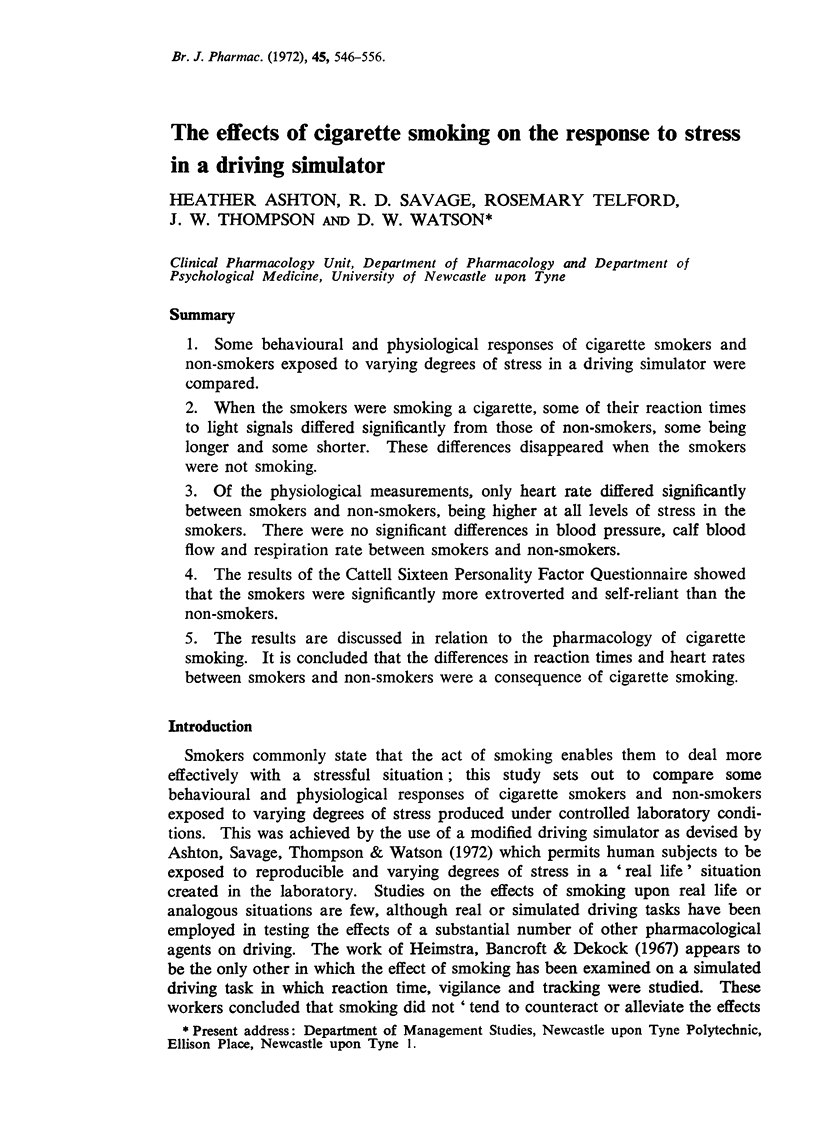
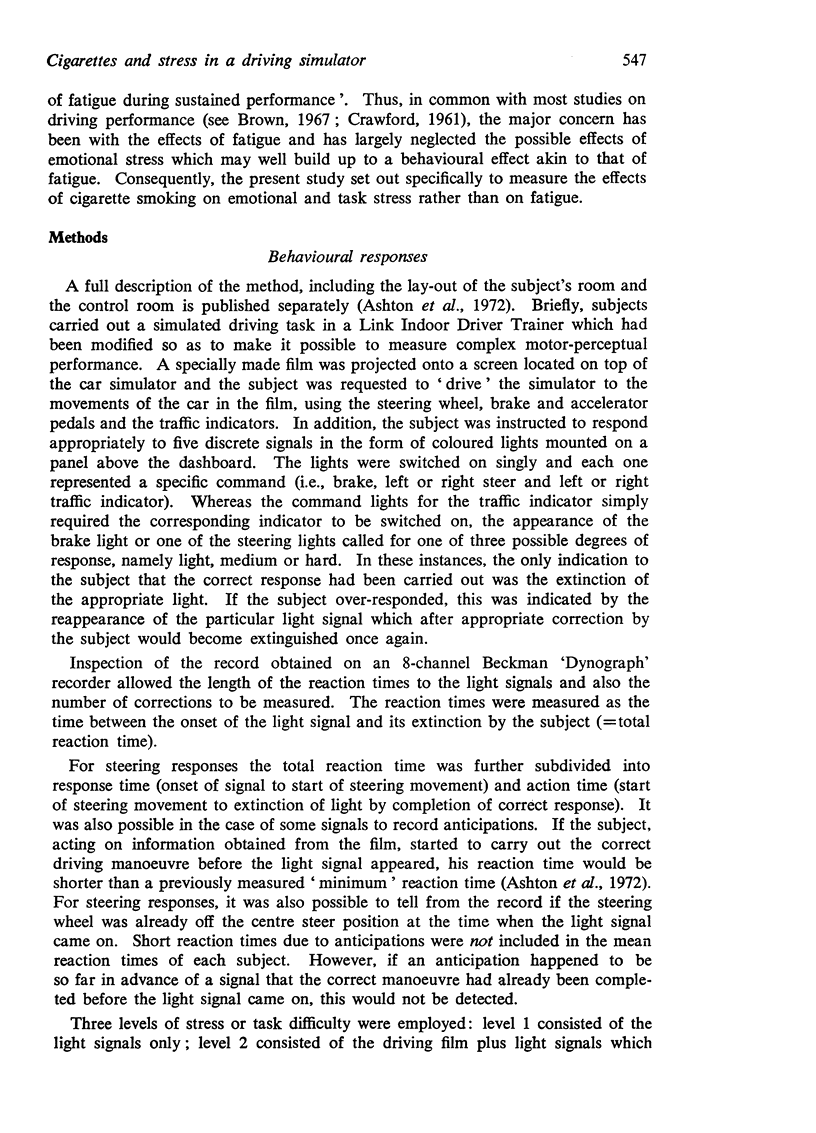
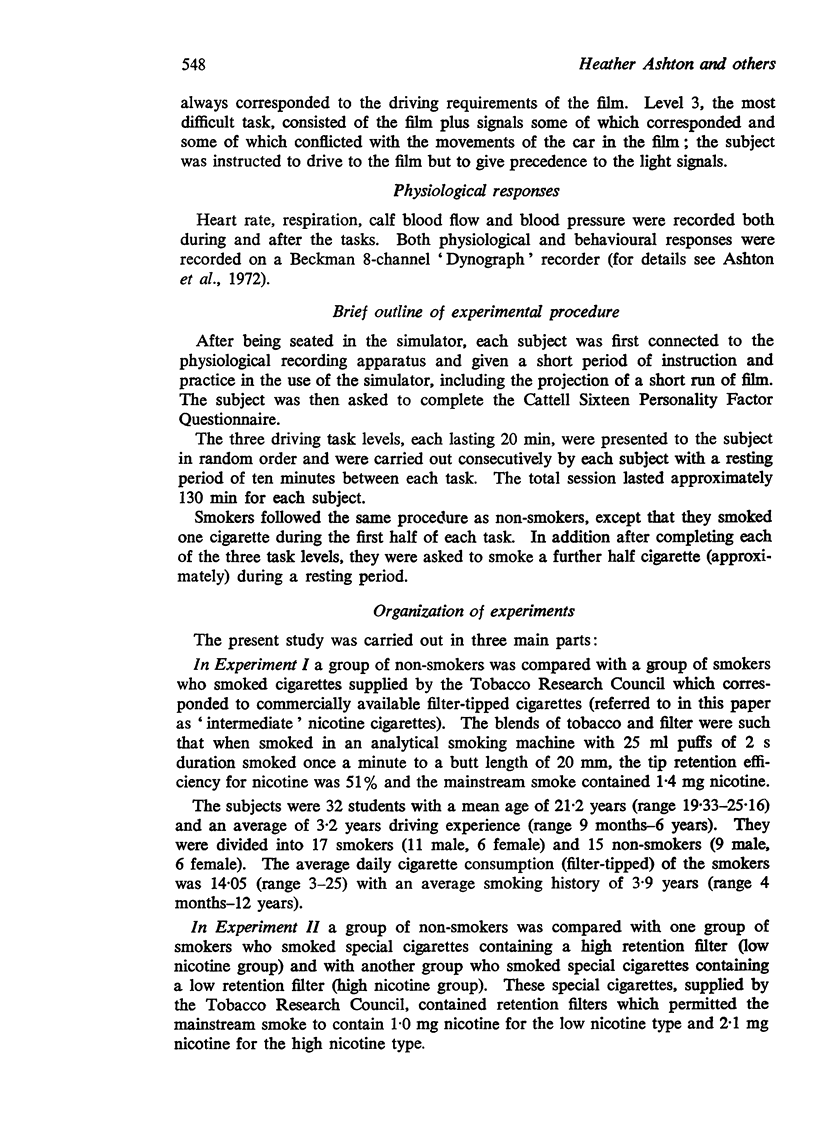
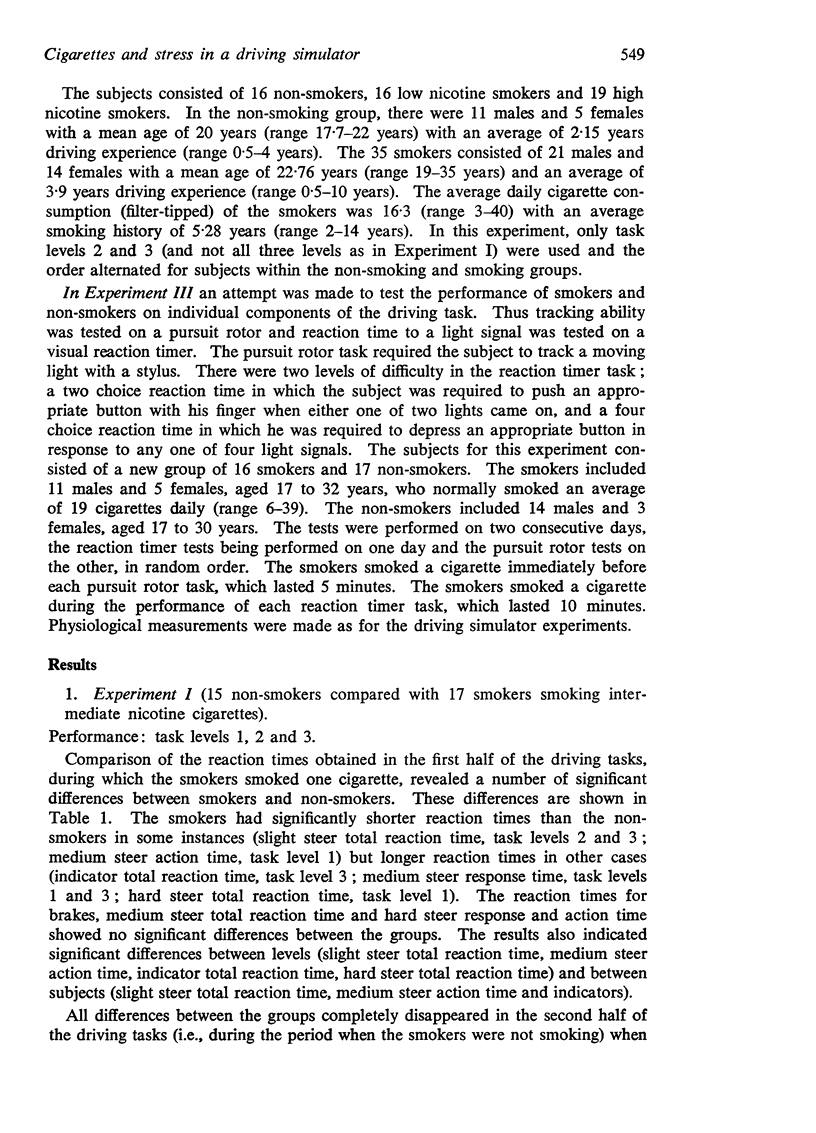
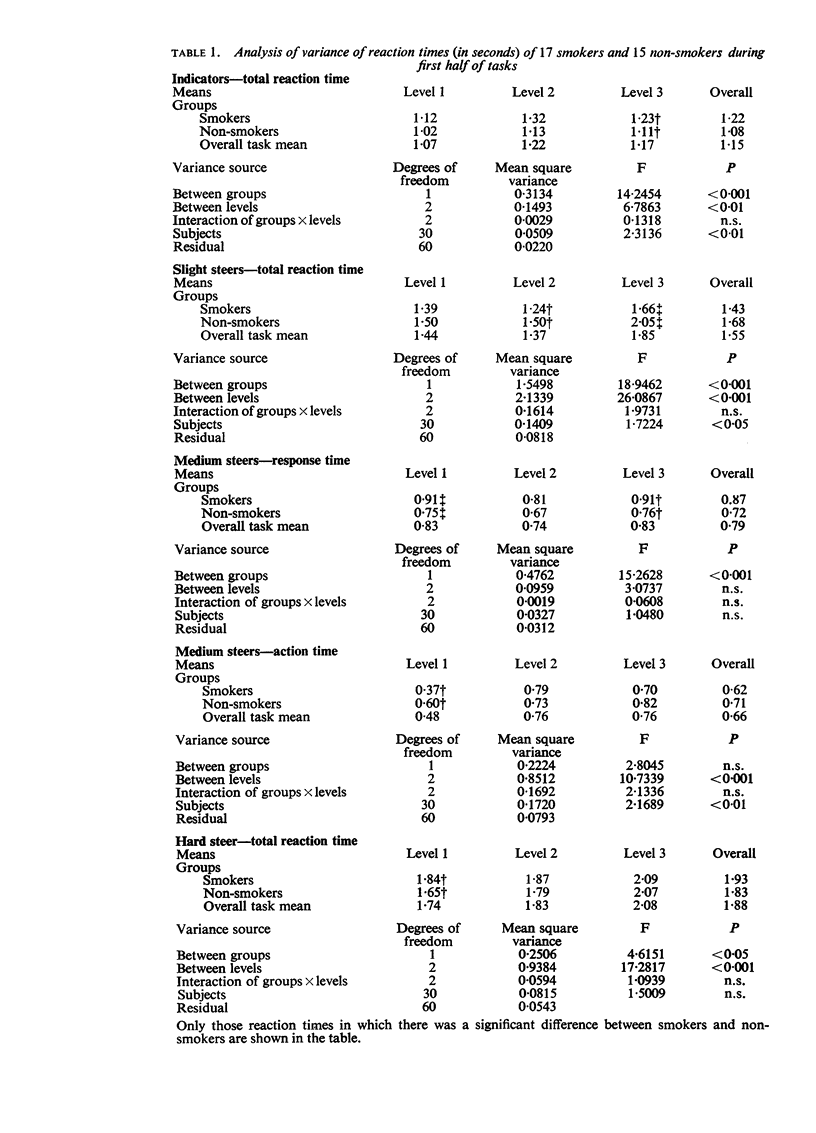
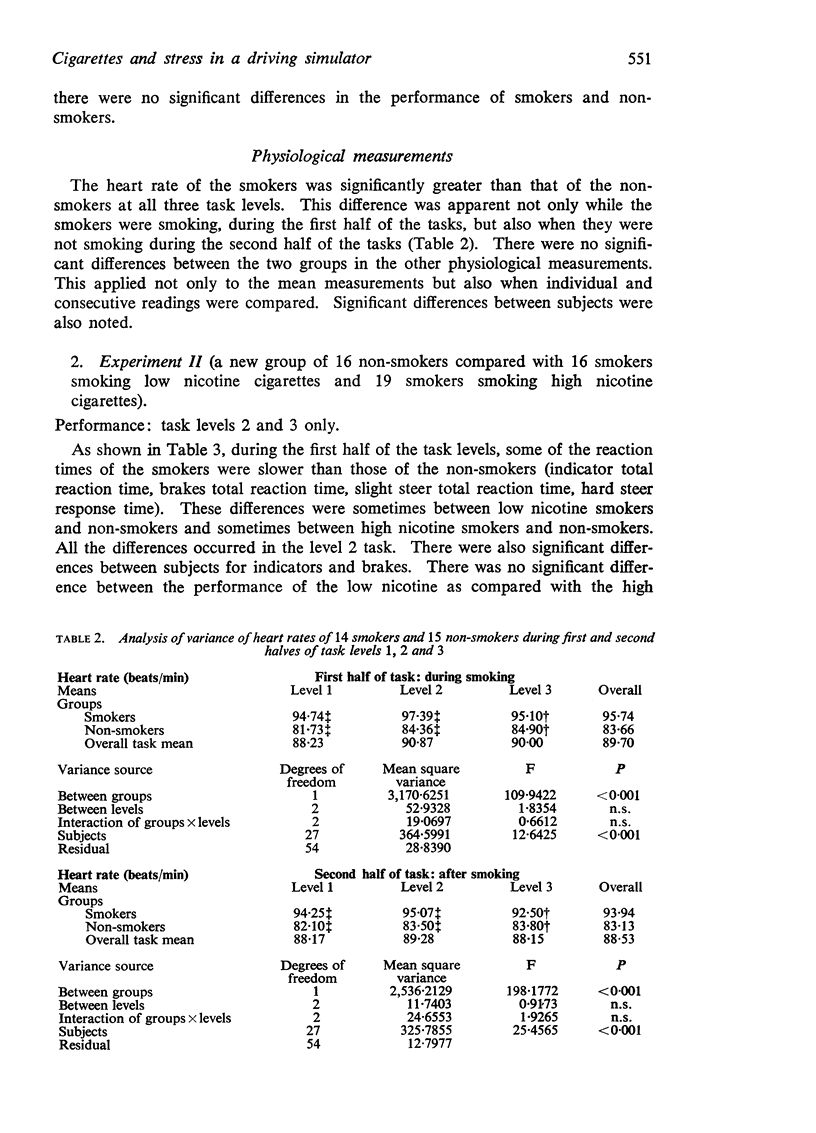
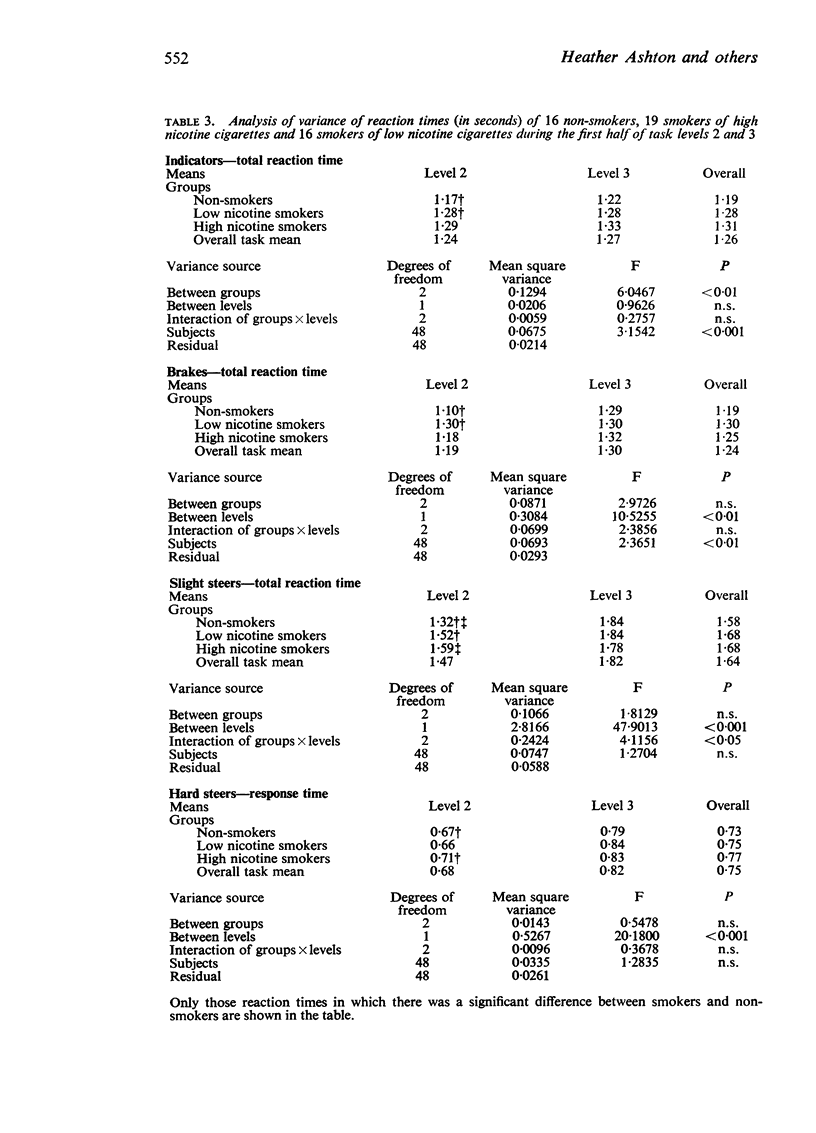
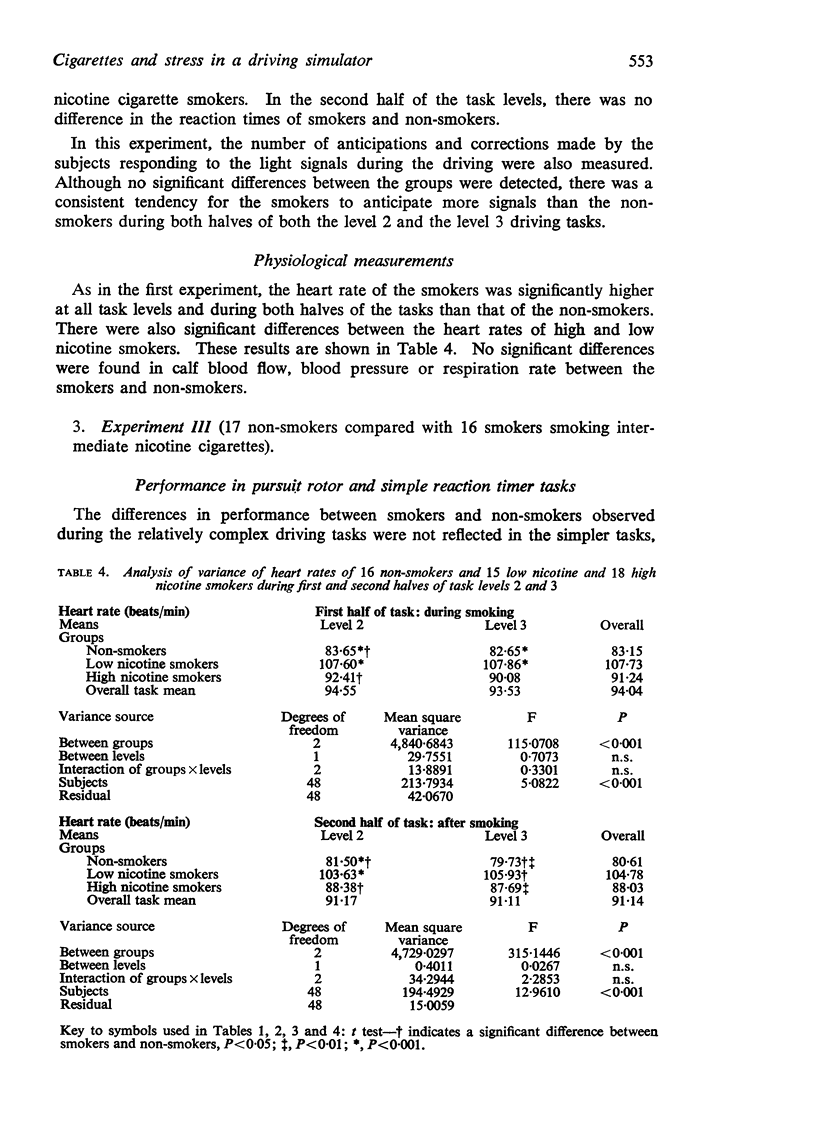
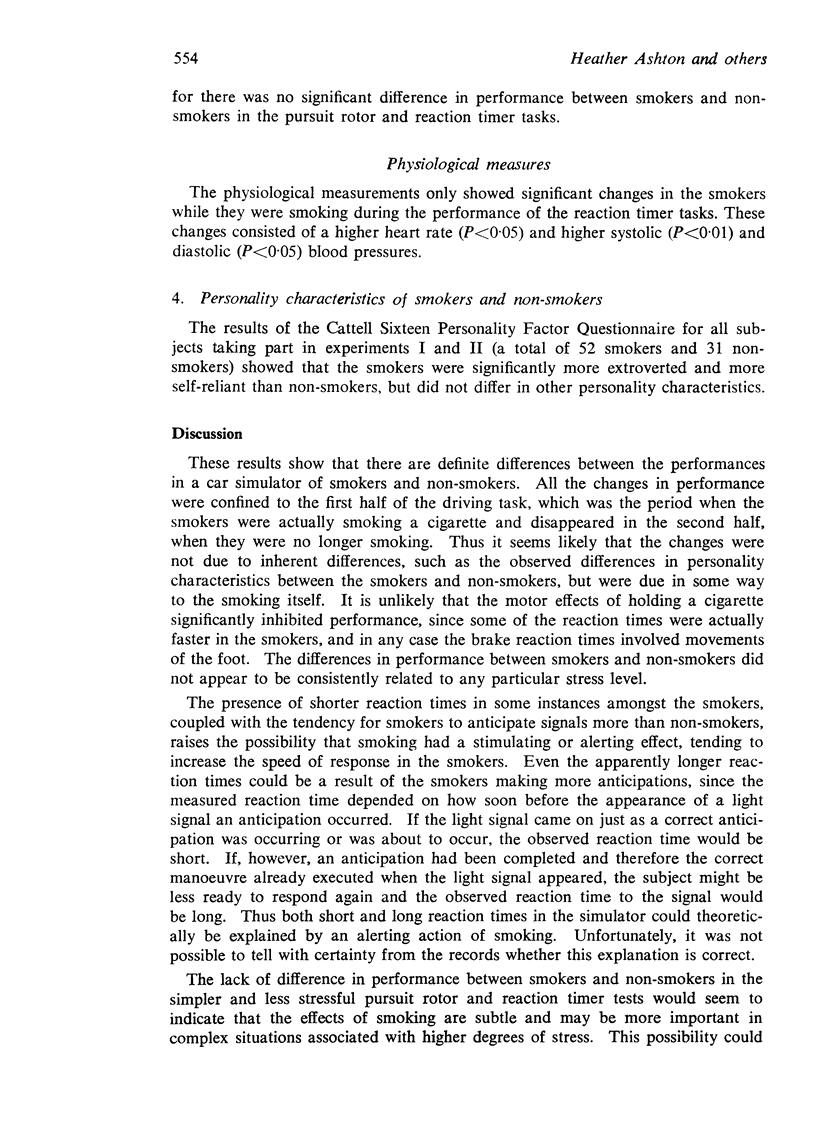
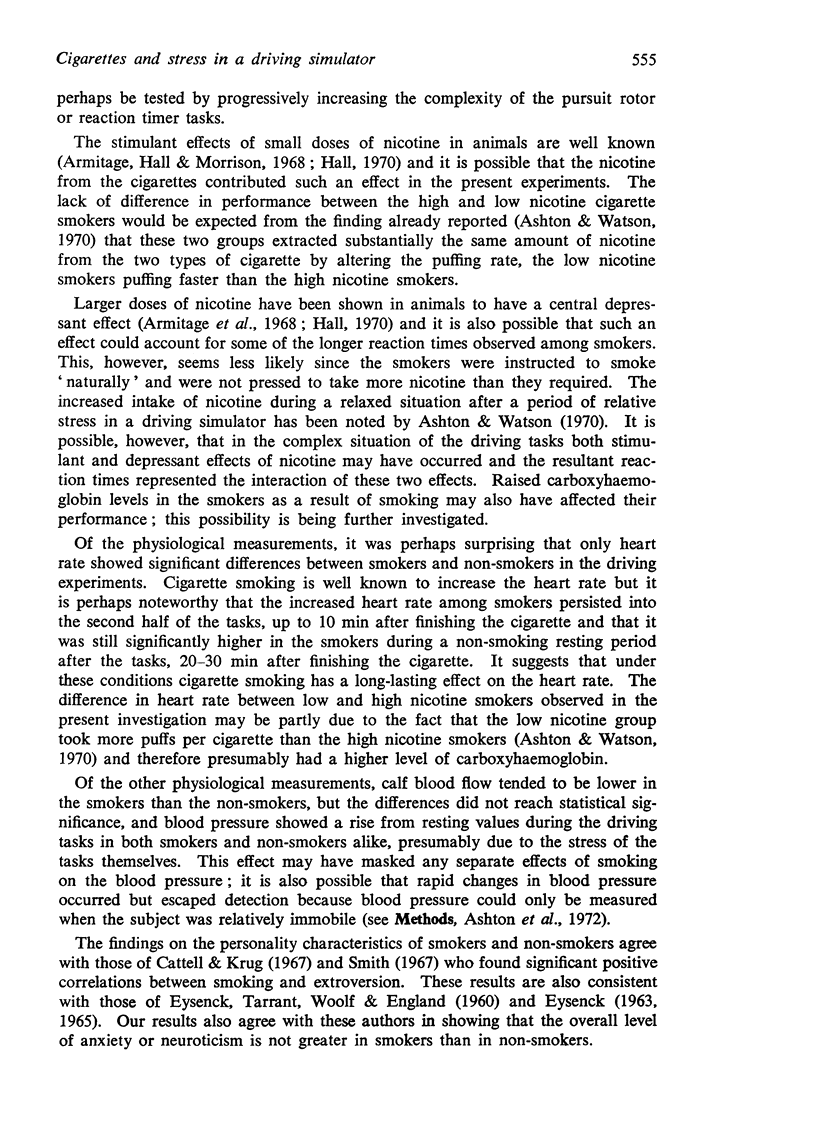
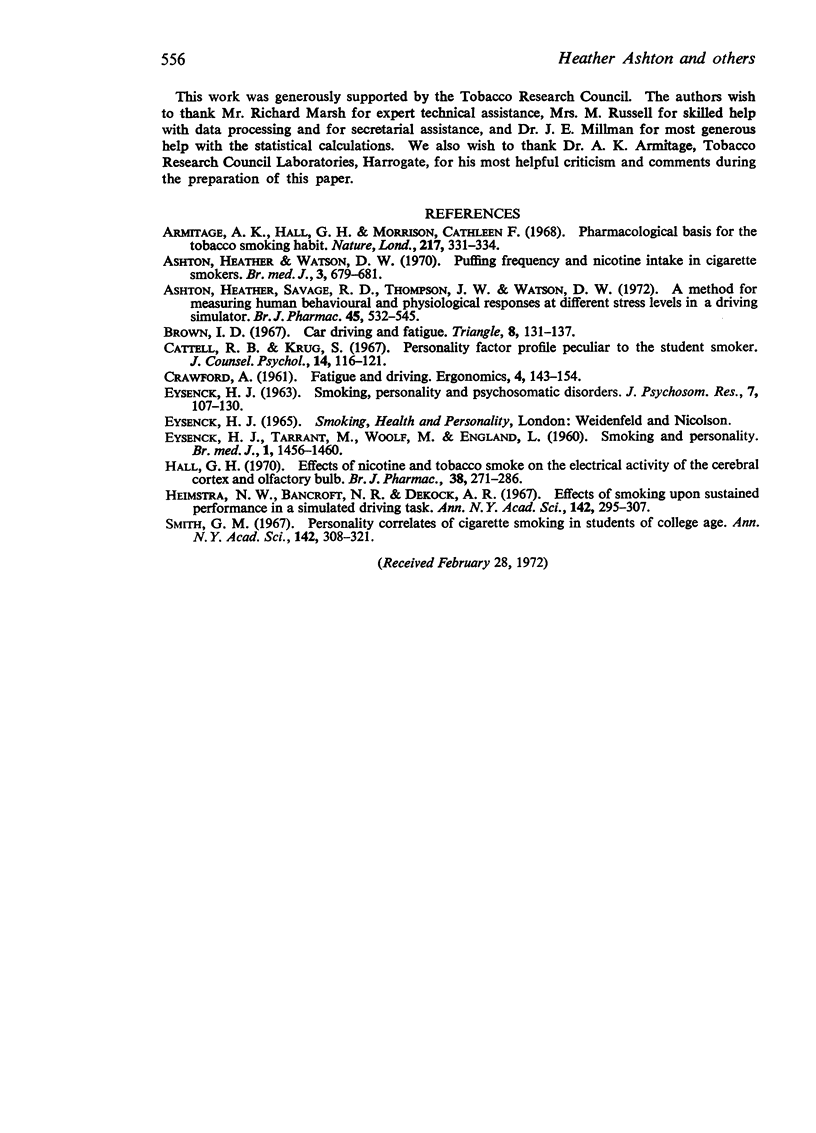
Selected References
These references are in PubMed. This may not be the complete list of references from this article.
- Armitage A. K., Hall G. H., Morrison C. F. Pharmacological basis for the tobacco smoking habit. Nature. 1968 Jan 27;217(5126):331–334. doi: 10.1038/217331a0. [DOI] [PubMed] [Google Scholar]
- Ashton H., Savage R. D., Thompson J. W., Watson D. W. A method for measuring human behavioural and physiological responses at different stress levels in a driving simulator. Br J Pharmacol. 1972 Jul;45(3):532–545. doi: 10.1111/j.1476-5381.1972.tb08111.x. [DOI] [PMC free article] [PubMed] [Google Scholar]
- Ashton H., Watson D. W. Puffing frequency and nicotine intake in cigarette smokers. Br Med J. 1970 Sep 19;3(5724):679–681. doi: 10.1136/bmj.3.5724.679. [DOI] [PMC free article] [PubMed] [Google Scholar]
- CRAWFORD A. Fatigue and driving. Ergonomics. 1961 Apr;4:143–154. doi: 10.1080/00140136108930515. [DOI] [PubMed] [Google Scholar]
- EYSENCK H. J. SMOKING, PERSONALITY AND PSYCHOSOMATIC DISORDERS. J Psychosom Res. 1963 Oct;7:107–130. doi: 10.1016/0022-3999(63)90023-0. [DOI] [PubMed] [Google Scholar]
- EYSENCK H. J., TARRANT M., WOOLF M., ENGLAND L. Smoking and personality. Br Med J. 1960 May 14;1(5184):1456–1460. doi: 10.1136/bmj.1.5184.1456. [DOI] [PMC free article] [PubMed] [Google Scholar]
- Hall G. H. Effects of nicotine and tobacco smoke on the electrical activity of the cerebral cortex and olfactory bulb. Br J Pharmacol. 1970 Feb;38(2):271–286. doi: 10.1111/j.1476-5381.1970.tb08516.x. [DOI] [PMC free article] [PubMed] [Google Scholar]


